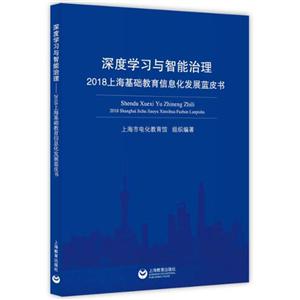基于高频GPS和强震仪观测实时监测地表形变

|
基于高频GPS和强震仪观测实时监测地表形变作者:涂锐 开 本:32开 书号ISBN:9787118111354 定价:98.0 出版时间:2017-04-01 出版社:国防工业出版社 |
基于高频GPS和强震仪观测实时监测地表形变 本书特色
涂锐*的《基于高频GPS和强震仪观测实时监测地表形变(英文版)》系统地介绍了GPS和强震仪数据融合处理的基本原理和算法模型,主要包括松组合模型、紧组合模型、自适应组合模型、改进的松组合模型、改进的紧组合模型、组合处理中关键技术问题、基线漂移与地表倾斜的关系以及各传感器观测的特点分析等。对GPS测速增强解算和基于联网模式的强震仪基线漂移校正也进行了分析介绍。
本书可供从事GPS灾害监测预警方面的科研、生产人员参考,也可作为高等学校大地测量与地球物理专业的教材使用。
基于高频GPS和强震仪观测实时监测地表形变 目录
Chapter 1 Introduction1.1 Scientific background1.1.1 GPS solution approaches1.1.2 Strong-motion data solution approaches1.1.3 Integration of GPS and accelerometer observations1.2 Aims and objectives1.2.1 Augmentation approach1.2.2 Integration approach1.2.3 Adaptive approach1.2.4 The key issues about integration1.2.5 The relationship between baseline shift and ground tiling1.3 Organization of the book Chapter 2 Real-time monitoring the ground motion using GPS with real time corrections2.1 Introduction2.2 Methodology2.2.1 The velocity determination model based on broadcast ephemeris2.2.2 Extracting corrections from the reference station2.2.3 The velocity determination model based on reference station correction2.2.4 Retrieve the final true velocity and displacement2.2.5 The data processing flow of the augmentation approach2.3 Experiment analysis2.3.1 Comparison of displacement and velocity between GPS and strong-motion sensor2.3.2 Comparison of displacement and velocity results between different sample rate data2.3.3 Comparison of GPS results between the single station method and augmentation method2.3.4 Comparison of the observation residuals and initial trend drift correction2.4 Conclusion Chapter 3 Application of a net-based baseline correction scheme tostrong-motion records of the 2011 Mw 9.0 Tohokuearthquake3.1 Introduction3.2 Methodology3.2.1 Selection of reference records3.2.2 Net-based correction on target records3.2.3 Detection of outlier records3.3 Application to strong-motion data for the 2011 Mw 9.0 Tohoku earthquake3.3.1 Data3.3.2 Selected reference records3.3.3 Augmented target records3.3.4 Outlier records3.3.5 Improvements over the previous empirical approaches3.4 Conclusion and discussion Chapter 4 Cost-effective monitoring of ground motion related toearthquakes, landslides or volcanic activity by joint useof a single-frequency GPS and a MEMS accelerometer4.1 Introduction4.2 Method4.3 Outdoor experiments4.4 Discussion and conclusions Chapter 5 A new algorithm for tight integration of real-time GPSand strong-motion records, demonstrated on simulated,experimental and real seismic data5.1 Introduction5.2 Mathematical model5.3 A new approach to combine GPS and seismic accelerometer data5.4 Validation and analysis5.4.1 Simulated dataset5.4.2 Experimental Test5.4.3 Application to a real earthquake : E1 Mayor-Cucapah Mw 7.2, 20105.5 Summary and discussion Chapter 6 Adaptive recognition and correction of baseline shifts fromcollocated GPS and accelerometer using two phases Kalmanfilter6.1 Introduction6.2 Methodology6.2.1 The model for tight integration of GPS and strong-motion measurements6.2.2 The adaptive recognition of baseline shifts in strong-motion records6.2.3 The implementation process6.3 Validation6.3.1 Experimental test using a shaking table6.3.2 Application to a real earthquake:2011 Mw 9.0 Tohoku earthquake6.4 Conclusion Chapter 7 An improved loose integration method of coseismie waves retrieving from collocated GPS and accelerometer7.1 Introduction7.2 Overview of the traditional loose integration method7.3 The improved loose integration method7.4 Validation and analysis7.5 Conclusion Chapter 8 An improved method for tight integration of GPS and strong-motion records: complementary advantages8.1 Introduction8.2 Methodology8.2.1 Using GPS to estimate baseline shifts for the strong-motion sensor8.2.2 Using acceleration to constrain GPS solution and ambiguity-resolution8.2.3 The implementation process of the method8.3 Validations8.3.1 Analysis of the baseline shift8.3.2 Analysis of the displacement time series8.3.3 Analysis of the zenith tropospheric delay8.3.4 Analysis of the waveforms8.4 Conclusions and discussions Chapter 9 The study of key issues about integration of GNSS andstrong-motion records for real-time earthquakemonitoring9.1 Introduction9.2 Method and Data9.3 Validation and analysis9.3.1 Coordinate system9.3.2 GNSS sampling rate9.3.3 The constrain of the dynamic noises9.3.4 GNSS data quality9.3.5 Convergence speed9.3.6 Ambiguity resolution9.4 Conclusions and discussions Chapter 10 The study of baseline shift error in strong-motion and ground tilting during co-seismic period based on GPS observations10.1 Introduction10.2 Extracting strong-motion baseline shift based on GPS observation10.3 Extracting of ground tilting information based on GPS observation10.4 Validation and analysis10.4.1 Experiment introduction and data processing10.4.2 Result analysis10.4.3 A case study of the earthquake event: 2011 Mw 9.0 Tohoku-Oki earthquake10.5 Conclusion Chapter 11 Comparison of high-rate GPS, strong-motion records andtheir joint use for earthquake monitoring: a ease study ofthe 2011 nw 9.0 Tohoku earthquake11.1 Introduction11.2 Datasets and processing approaches11.2.1 Data description11.2.2 Processing approaches11.3 Results and analysis11.3.1 Comparison of horizontal co-seismic movement11.3.2 Comparison in time-frequency domain of the displacement time series11.3.3 Comparison of velocity waveforms11.3.4 Comparison of P wave detection11.4 Conclusions and discussions Chapter 12 Synthesis12.1 Conclusions12.1.1 GPS velocity estimation augmentation approach12.1.2 Strong-motion net-based augmentation approach12.1.3 Loose integration of GPS and strong-motion observations12.1.4 Tight integration of GPS and strong-motion observations12.1.5 Adaptive integration of GPS and strong-motion observations12.1.6 Improved loose integration of GPS and strong-motion observations12.1.7 Improved tight integration of GPS and strong-motion observations12.1.8 Key issues of integration of GPS and strong-motion observations12.1.9 Relationship between baseline shifts and ground tilting12.1.10 Comparison of different sensors for earthquake monitoring and early warning12.2 Outlook12.2.1 Study the earthquake early warning model12.2.2 Study the integration of multi-sensor and data quality control12.2.3 Develop a new sensor and real-time application system Acronyms and abbreviations References
政治军事 军事 军事技术
在线阅读
- 最新内容
- 相关内容
- 网友推荐
- 图文推荐
上一篇:权力政治学
下一篇:青春奥秘-青年的历史存在与角色
零零教育社区:论坛热帖子
| [高考] 2022 西安电子科技大学《软件工程》大作业答案 (2022-04-25) |
| [家长教育] 孩子为什么会和父母感情疏离? (2019-07-14) |
| [教师分享] 给远方姐姐的一封信 (2018-11-07) |
| [教师分享] 伸缩门 (2018-11-07) |
| [教师分享] 回家乡 (2018-11-07) |
| [教师分享] 是风味也是人间 (2018-11-07) |
| [教师分享] 一句格言的启示 (2018-11-07) |
| [教师分享] 无规矩不成方圆 (2018-11-07) |
| [教师分享] 第十届全国教育名家论坛有感(二) (2018-11-07) |
| [教师分享] 贪玩的小狗 (2018-11-07) |






